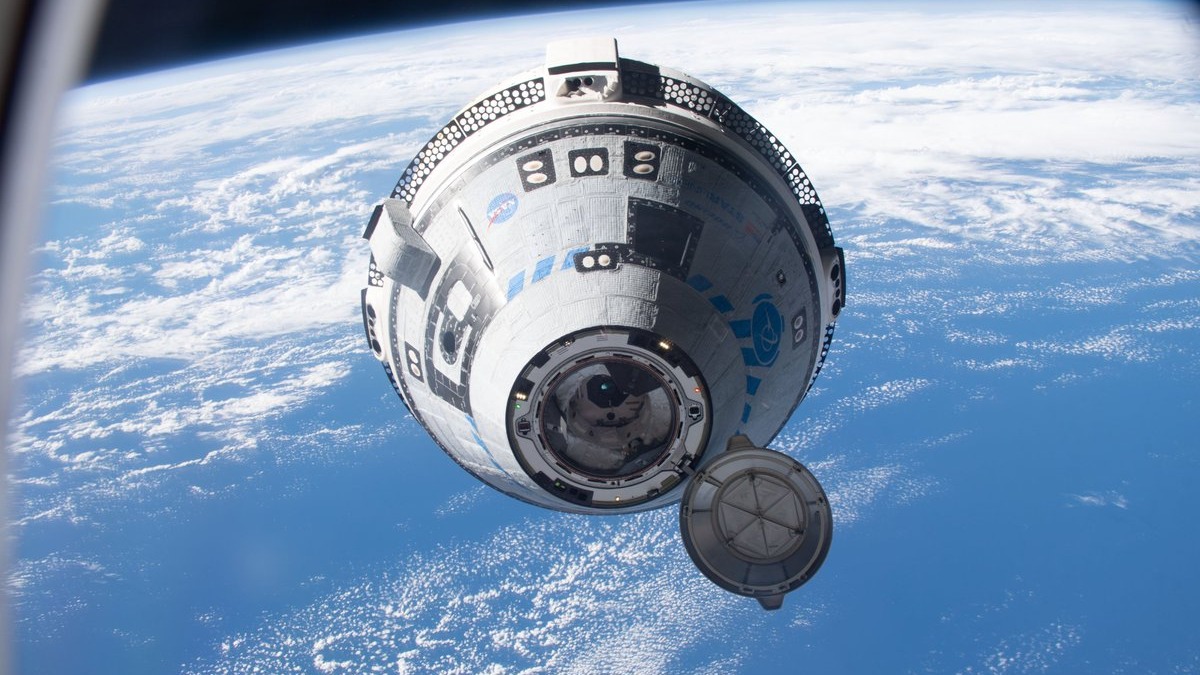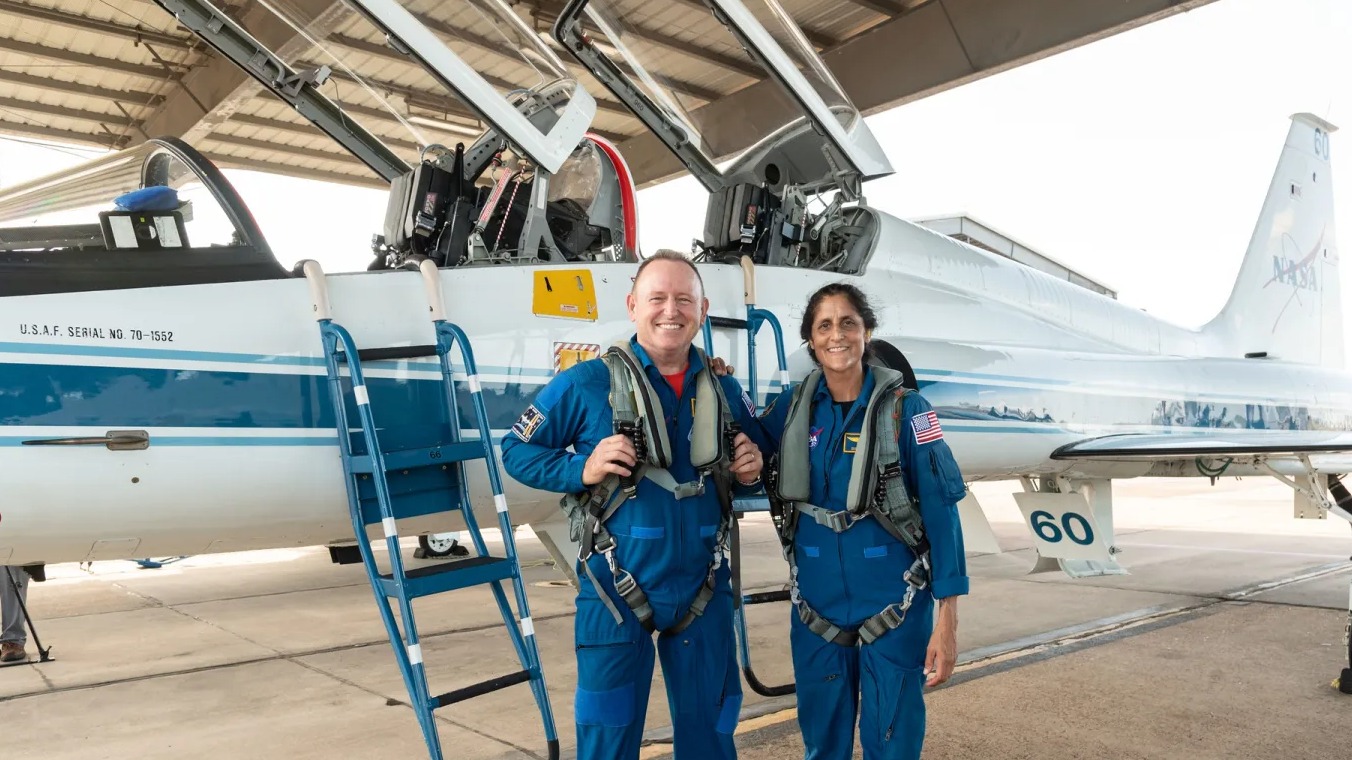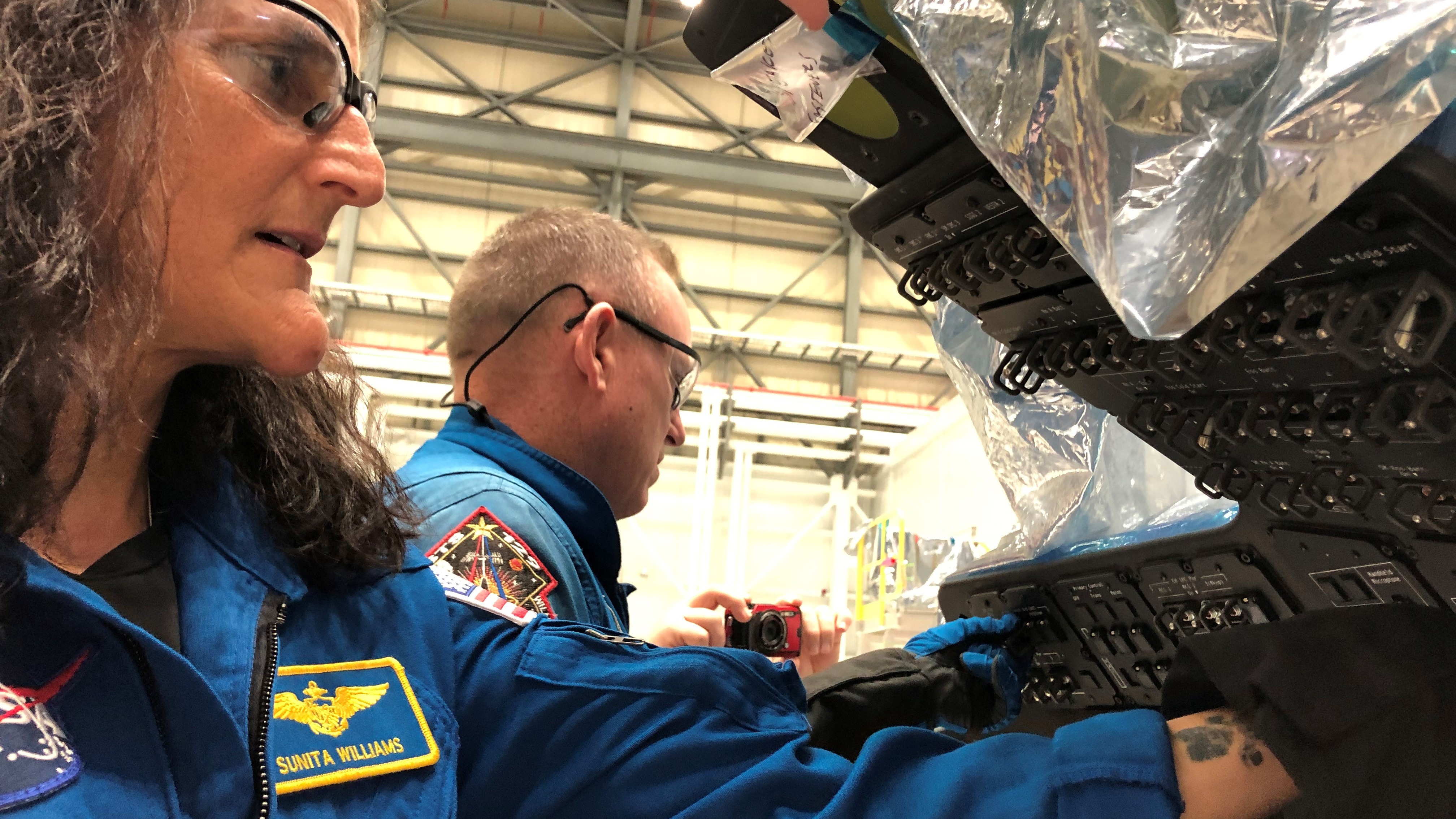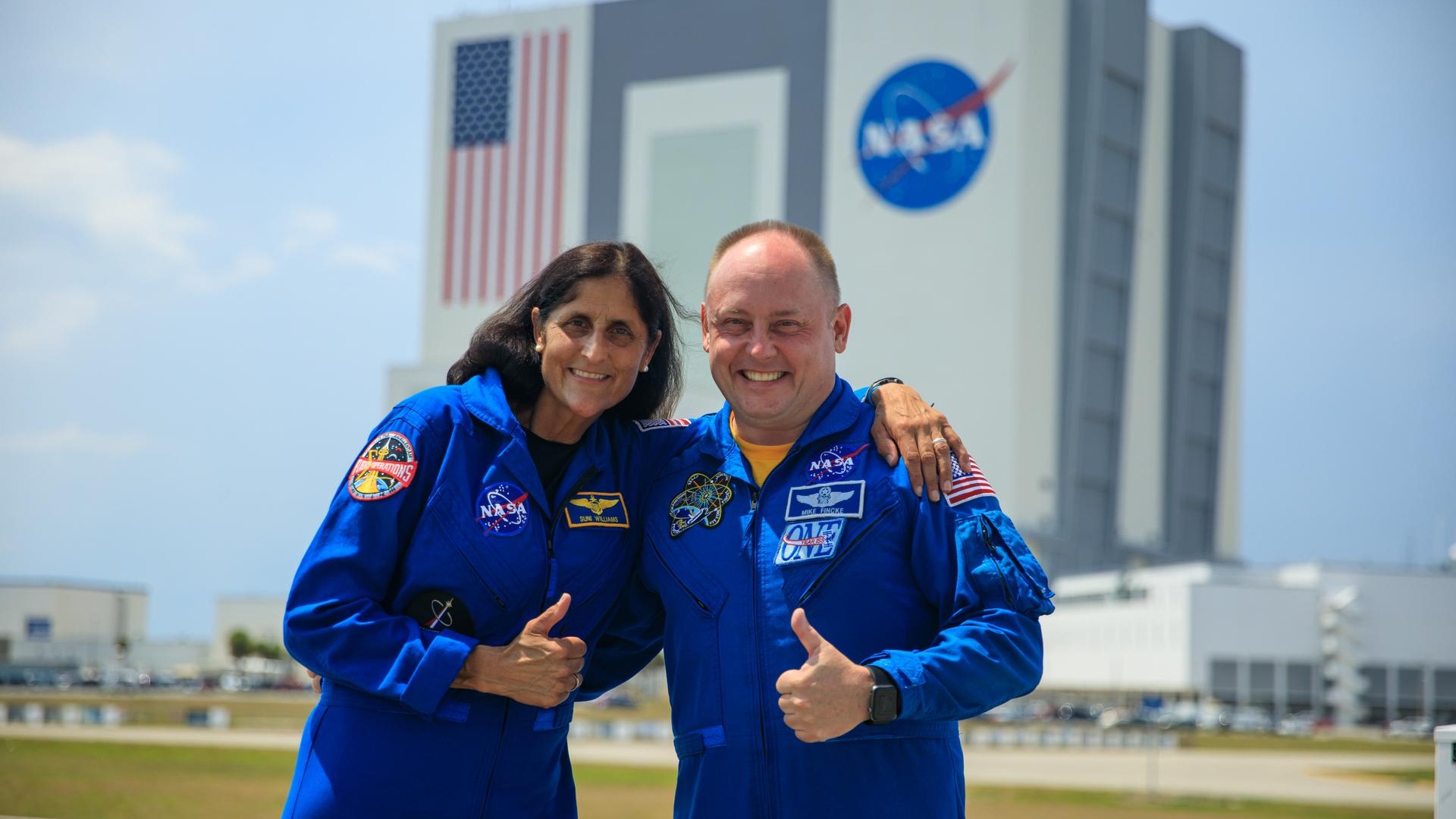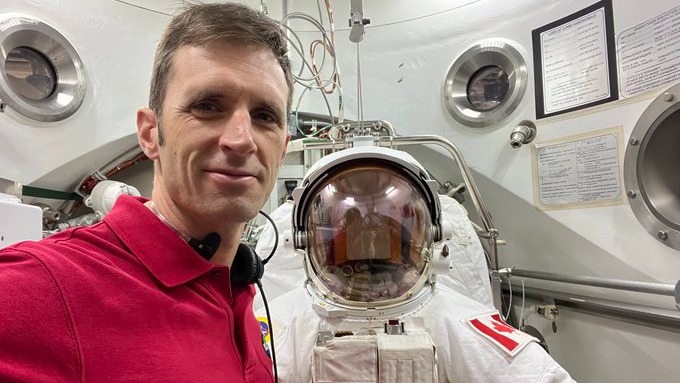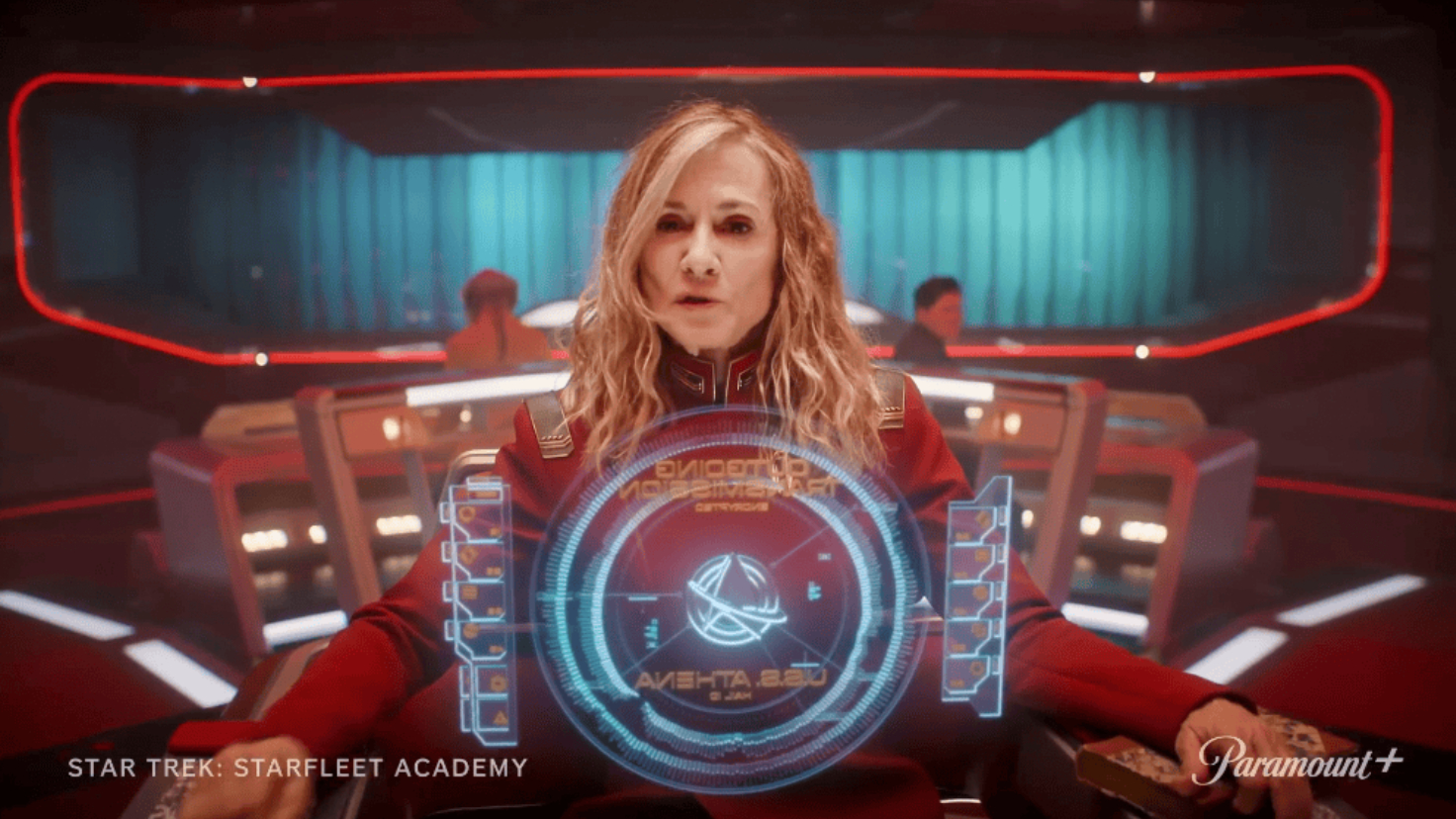1st Boeing Starliner astronauts are ready to launch to the ISS for NASA (exclusive)
"I've jokingly said I could do a barrel roll around the space station."
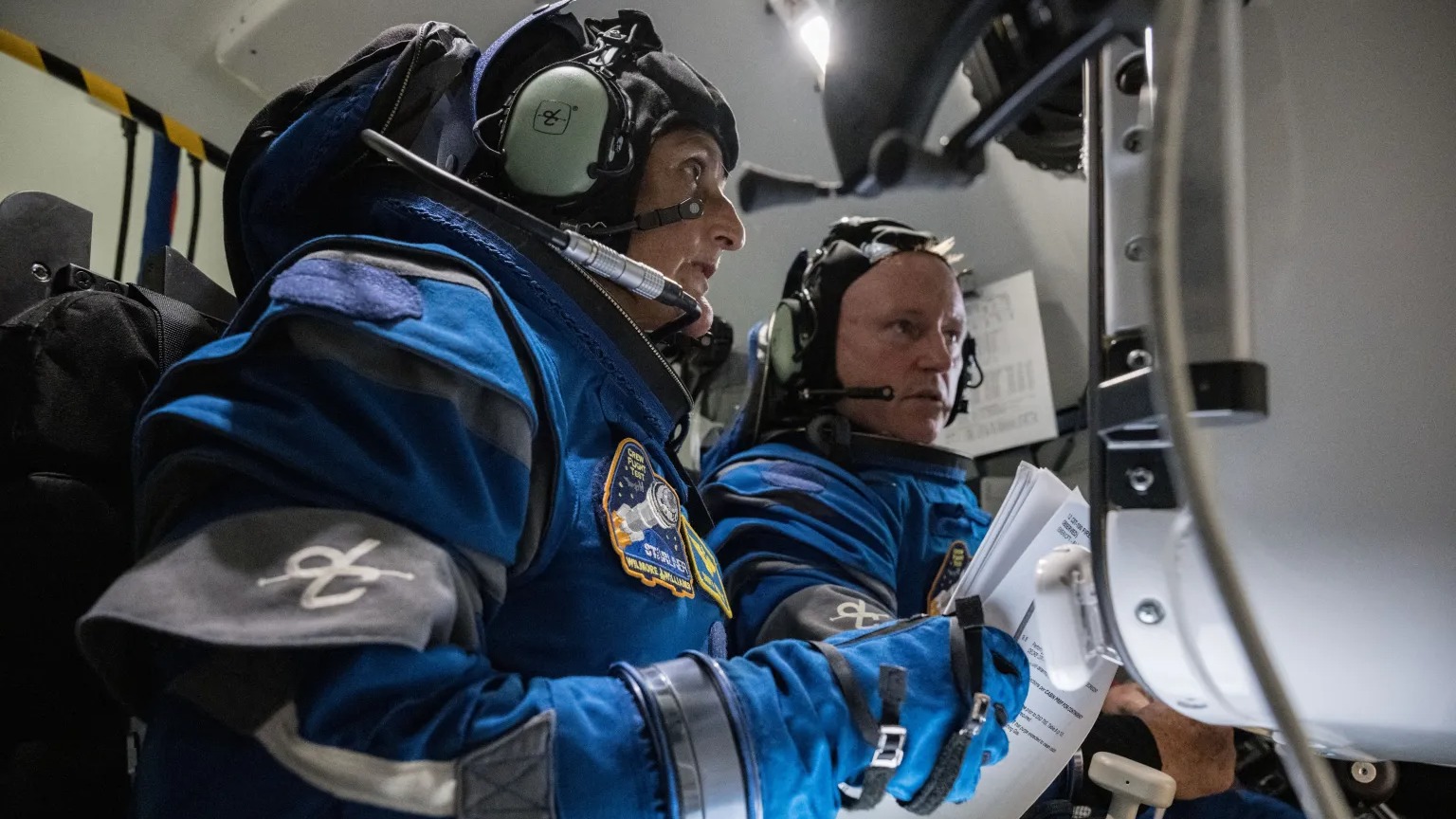
HOUSTON — Two former U.S. Navy test pilots, now NASA astronauts, can't wait to finally get their hands on a new spacecraft.
Butch Wilmore and Suni Williams told Space.com and a small group of reporters at NASA's Johnson Space Center (JSC) that they are excited for the first launch of Boeing Starliner, now set to fly to the International Space Station for a roughly 10-day mission set to go no earlier than May 1.
Wilmore, who has 8,000 flight hours and two space missions under his belt, said Friday (March 22) he'll be comparing the handling and rolling qualities of Starliner to see if it matches up with the simulators he's been training on for numerous years.
Differences "may or may not be a negative," he said in a sunny, glassed-in conference room at JSC's Building 2 and press center, "but it will be a difference that we will fix in our simulation, and go from there."
Related: Boeing's 1st Starliner astronaut flight test for NASA could launch as soon as May 1
Boeing's Starliner and SpaceX's Dragon were selected by NASA for commercial crew missions in 2014 to replace the space shuttle, which Wilmore and Williams both used for their first missions.
Dragon has flown 11 operational missions to the ISS for NASA and Axiom Space since 2020, but Starliner's progress snagged. An uncrewed test flight with Starliner failed to reach the ISS in 2019, the pandemic delayed fixes for a second successful test flight, and other technical issues with parachutes and wiring uncovered last year delayed the first astronaut excursion, known as Crew Flight Test (CFT), even further.
Breaking space news, the latest updates on rocket launches, skywatching events and more!
The CFT astronauts emphasized that safety necessitated the delays, and talked about how robust Starliner is after all the design changes. For example, Wilmore said the whole mission could be flown "with no communication at all" with Mission Control if truly necessary. The engineers also built in scenarios where the astronauts could direct the spacecraft to point to the sun to gain more solar power, should there be a need for it. And these are just some of the backups in place.
Wilmore said the second commercial crew vehicle will allow "continued access to space" from American soil, which is important. NASA relied upon Russian Soyuz spacecraft to launch astronauts for a decade while Dragon was under development; in fact, both Williams and Wilmore flew aboard Soyuz on past missions.
The U.S. and Russia continue to use each other's vehicles for astronaut launches, for both backup reasons and for policy reasons, but that may change after 2028 if Russia withdraws from the ISS as planned. (The rest of the coalition has signed on to 2030, although that may extend if new commercial space stations aren't ready.)
Wilmore also said the lessons learned from Starliner will help NASA's Artemis program of moon exploration missions, which uses the Lockheed Martin-built Orion spacecraft. "There will be some things or findings, potentially, that we can find here that will be of benefit to their program so they don't have to figure it out themselves," Wilmore said, pointing to examples like the display technology and the operations practice.
He's confident Starliner will perform as expected. "Don't get me trouble, but I've jokingly said I could do a barrel roll around the space station. We would never do that. No reason to do that! But the capability of this spacecraft? It's there."
Related: Boeing's 1st Starliner to visit space station looks spectacular in these astronaut photos
Williams, in an separate interview minutes later and in an office just down the hall from Wilmore, said the NASA astronauts have been working closely for years with Boeing to get Starliner set. The astronauts' feedback has been taken into account with design "trades," meaning decisions about how to prioritize aspects such as astronaut comfort, or spacecraft performance, or even sizing of displays.
Spaceflight, emphasized Williams, is not risk-free: She was at the agency when the Columbia disaster occurred in 2003, killing seven astronauts during the space shuttle's re-entry, and she also remembers the 1986 launch disaster of Challenger in which another seven astronauts died.
But while Starliner has not flown yet with astronauts, "knowing all those lessons learned, we've tried to put this 'Get Out of Jail Free card' — as we call it — (which is) the backup mode. We tried to make it (backup) as robust as possible, and we feel really good about it," Williams said.
"All the other stuff than the nominal mission," she continued, "we've gone through it a number of times. We're hoping all the automation works as advertised, but we have ways to, you know, work around it in case we have a couple of hiccups here and there. Then hopefully, we can jump right back in the automation and continue the mission as designed. So we feel really confident about it at this point."
Williams, who has 3,000 hours of flight time in her career, said there will be moments of fun during the Starliner mission: "It's like a little sports car", she said of Starliner's maneuverability against shuttle or Soyuz. The astronauts, however, will be focused upon all the points of the mission in which trouble could happen.
Staging of the United Launch Alliance Atlas V rocket bearing them to space is one example she highlighted, but given the thousands of hours of practice she said she expects all will turn out well even in most off-nominal situations.
"We talked to the weather guys" in case of abort, she said, as an example. "We really want to know what the winds and waves and all that kind of stuff are like after staging, in case something happens ... because every time there was a dynamic event (like staging) the instructors would fail something (in the simulators)."
Williams, an avid skier, joked that staying off the slopes for an extended period was one of the hardest parts of the wait for space as the crew needs to de-risk its activities in the meantime. But the astronauts have had an important role in those extra years, serving as quality assurance because "our eyes are on the spacecraft."
Related: New NASA astronauts 'thrilled' to see 1st Boeing Starliner crew launch in May (exclusive)
The training also very much involves the next group of astronauts set to climb aboard Starliner for its first operational and six-month mission, currently set for 2025. Assigned so far to the Starliner-1 mission are NASA astronauts Scott Tingle and Mike Fincke, and Canadian Space Agency astronaut Joshua Kutryk. Starliner-1 will be Tingle's second mission, Fincke's fourth mission and Kutryk's first.
Fincke, who at one point was assigned to Crew Flight Test himself, has worked on the "endeavor" of getting Starliner off the ground longer than any other astronaut, Wilmore emphasized in a press conference in a briefing room here in Building 2.
Fincke remains backup for the Crew Flight Test astronauts in case of issues with the prime crew, too. Practically speaking, what this means is Fincke is often training alongside Wilmore and Williams.
"It's been a real luxury, because we're sharing ideas the whole time, and he's taking notes and and making changes and getting ready for the next flight," Williams said during the same press conference.
Kutryk, a test pilot and fighter pilot with the Royal Canadian Air Force before joining CSA in 2017, said the entire team behind CFT is working the same principles as he learned in the military: "Predict, test, validate."
Aside from flying on Starliner-1, Kutryk will be Mission Control CAPCOM (an astronaut on the ground who communicates with crew members in space) during the ascent of CFT and as such is also deeply embedded in the training for the first astronaut flight. In fact, he's been doing the work quietly since 2021, although his Starliner-1 assignment was only announced last fall.
"What we want to see happen (during CFT) is the performance of this vehicle match our understanding," he said during a phone call on Friday, while on a school and media tour in Canada discussing Starliner-1 and ISS.
"We wanted to match our modeling of Starliner at a system level or vehicle performance level. We want to validate those models. We want to reinforce confidence in the fact that we understand the vehicle, and all of its different modes."
The crew and ground team "are super excited" about CFT, and Kutryk said he's looking forward to supporting the launch (and perhaps some other shifts, if needed) from the White Flight Control Room at JSC's Christopher C. Kraft Jr. Mission Control Center.
Bringing humans on board Starliner for the first time will introduce new metrics to track compared to the two uncrewed test flights, he said, such as cockpit noise levels, how well the vehicle can be controlled, or the performance of the life support equipment.
"In the years that have led up to this point, we've been working as a team to test and evaluate the vehicle, and our procedures, and our reactions, and our training. Where needed, we've refined all of that," Kutryk said. "We've ended up changing software, changing things on the vehicle and changing training. It's been a long iterative process — as you'd expect, I would say — in flight test."

Elizabeth Howell (she/her), Ph.D., was a staff writer in the spaceflight channel between 2022 and 2024 specializing in Canadian space news. She was contributing writer for Space.com for 10 years from 2012 to 2024. Elizabeth's reporting includes multiple exclusives with the White House, leading world coverage about a lost-and-found space tomato on the International Space Station, witnessing five human spaceflight launches on two continents, flying parabolic, working inside a spacesuit, and participating in a simulated Mars mission. Her latest book, "Why Am I Taller?" (ECW Press, 2022) is co-written with astronaut Dave Williams.
